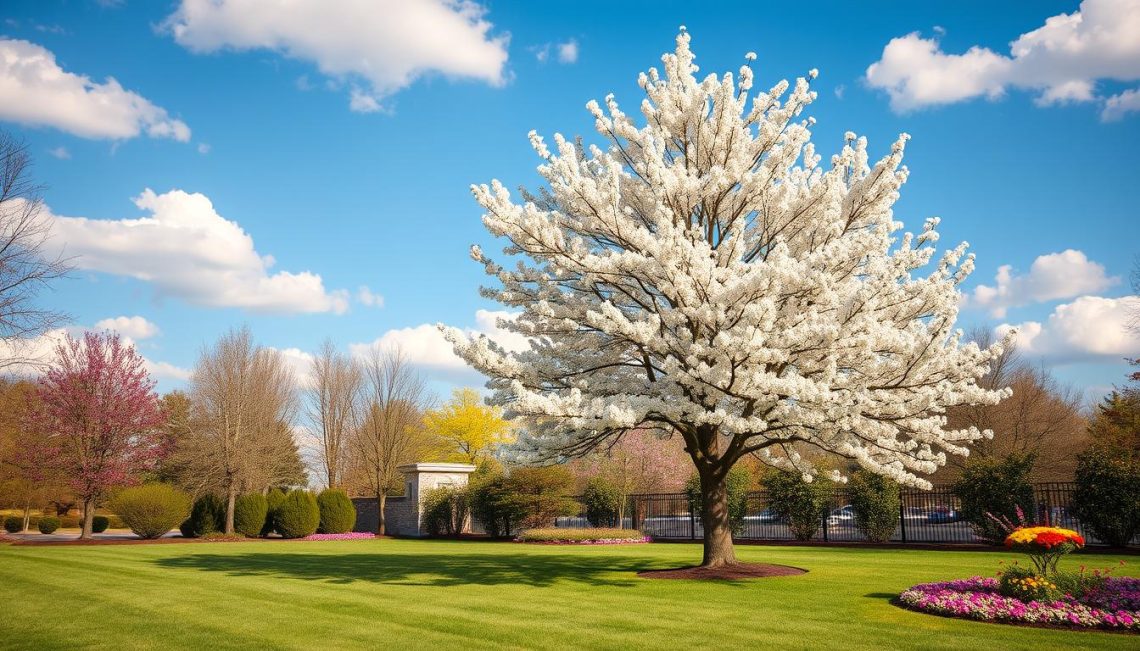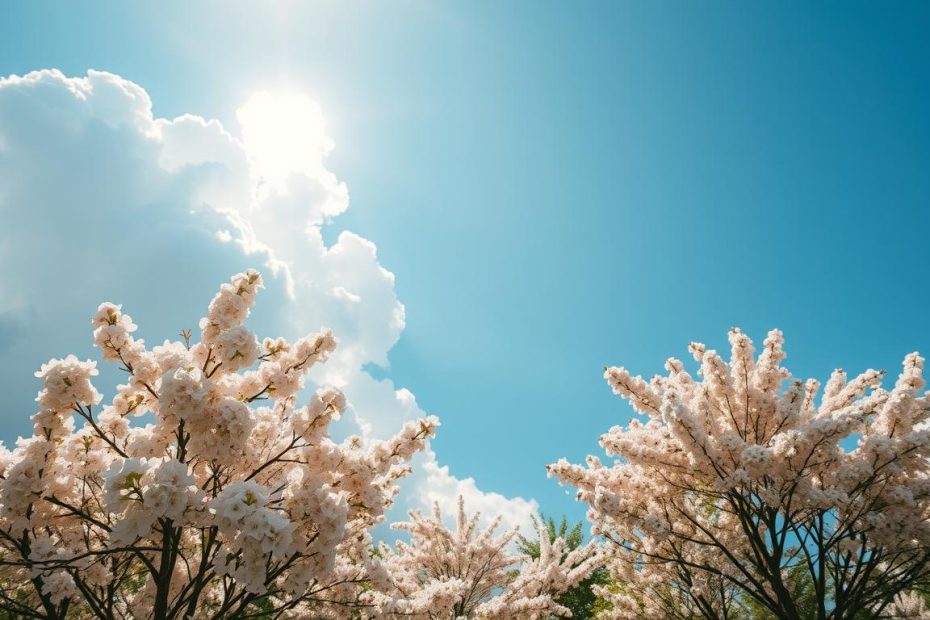As we welcome the new season, our outdoor spaces can be transformed into vibrant areas with the right selection of flowering trees. We will guide you through the process of choosing the perfect trees for your landscape and maintaining their beauty throughout the year.
Whether you’re a seasoned gardener or a beginner, our comprehensive guide is designed to help you make the most of your outdoor decor. We will introduce you to the diverse world of flowering trees, discussing their varieties and benefits, and how they can be integrated into your landscape design.
Selecting the Perfect Spring Trees for Your Landscape
As we welcome spring, choosing the right trees for our landscapes becomes a top priority. The right trees not only enhance the beauty of our outdoor spaces but also provide numerous environmental benefits.
When selecting spring trees, it’s essential to consider several factors to ensure they thrive in our specific conditions. This involves understanding the popular varieties of spring flowering trees and assessing our local climate zone and soil conditions.
Popular Spring Flowering Tree Varieties
Spring flowering trees are a delight, offering vibrant colors and fragrances that signal the end of winter. Some of the most popular varieties include dogwoods, cherry blossoms, and magnolias. Each of these trees has its unique characteristics and growing requirements.
| Tree Variety | Climate Zone | Soil Preference | Maintenance Level |
|---|---|---|---|
| Dogwood | 4-9 | Well-drained, acidic | Moderate |
| Cherry Blossom | 5-8 | Well-drained, slightly acidic | High |
| Magnolia | 4-9 | Well-drained, fertile | Moderate |
Understanding these characteristics helps us make informed decisions about which trees to plant in our landscapes.

Considering Your Climate Zone and Soil Conditions
Our local climate zone and soil conditions play a crucial role in determining the success of our tree planting endeavors. It’s vital to choose trees that are compatible with our specific climate and soil type.
Gardening tips for assessing your climate zone include checking the USDA Plant Hardiness Zone Map and consulting with local nurseries or gardening experts. For soil conditions, testing the pH level and understanding the soil composition can guide us in selecting trees that will flourish.
By carefully considering these factors and choosing the right trees for our spring landscapes, we can enjoy beautiful blooms and a healthy, thriving outdoor space.
How to Plant and Care for Spring Trees
With spring in full bloom, it’s an ideal time to plant trees and watch them flourish in your landscape. Planting and caring for spring trees requires attention to detail and a bit of know-how to ensure they get off to a healthy start.
Best Time to Plant in Spring
The best time to plant trees in the spring is when the soil has warmed up and the threat of frost has diminished. This timing varies depending on your climate zone, but generally, late March to early May is considered ideal for many regions.
As one gardening expert notes, “Planting trees in the spring allows them to establish a strong root system before the heat of summer.” This is crucial for the tree’s survival and long-term health.
Step-by-Step Planting Instructions
Planting a tree involves several key steps:
- Prepare the soil by loosening it to a depth of about 12 inches.
- Dig a hole that is two to three times as wide and just as deep as the tree’s root ball.
- Gently remove the tree from its container and place it in the hole.
- Fill the hole with a mix of soil and organic matter, ensuring the tree is at the same depth as it was in the container.
- Water thoroughly to settle the soil.
Essential Watering and Mulching Techniques
Watering is critical, especially during the first year after planting. Trees typically require about 1 inch of water per week, either from rainfall or irrigation. Mulching around the base helps retain moisture, suppress weeds, and regulate soil temperature.
A layer of 2-3 inches of mulch is recommended, keeping it a few inches away from the tree trunk to prevent rot.
Seasonal Maintenance Tips
Seasonal maintenance is vital for the health and appearance of your spring trees. This includes:
- Regularly inspecting for signs of disease or pests.
- Pruning trees annually to maintain shape and promote healthy growth.
- Fertilizing as needed, based on soil conditions and tree species.
By following these tips, you can enjoy the beauty and benefits of your spring trees for years to come.
Transform Your Outdoor Space with Spring Trees
As we conclude our comprehensive guide, we see how spring trees can transform your outdoor space into a breathtaking landscape. Incorporating spring flowering trees into your landscape design creates a harmonious balance between nature and your outdoor decor.
Whether you’re looking to add a pop of color or create shade, spring trees offer a versatile and stunning solution. By choosing the right trees for your climate zone and soil conditions, and following proper planting and care techniques, you can enjoy the beauty of spring trees in your outdoor space.
With a well-designed landscape featuring spring flowering trees, you can enhance the natural beauty of your surroundings and create an inviting atmosphere for outdoor activities. We encourage you to start your journey with spring trees and experience the joy they bring to your outdoor space.
